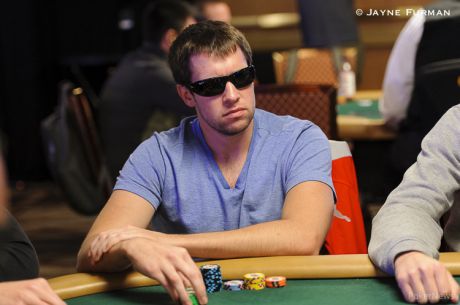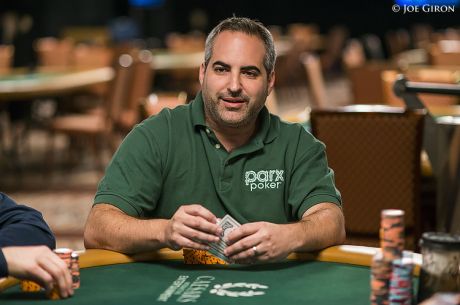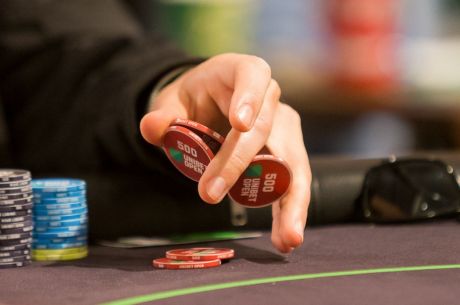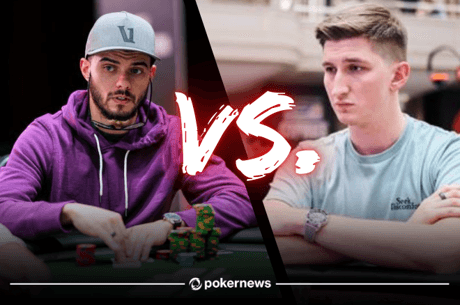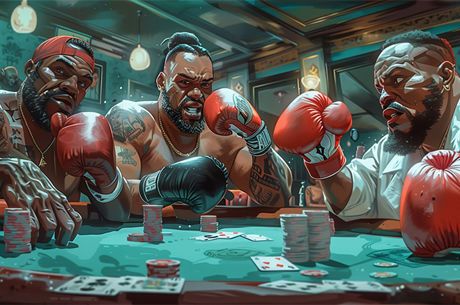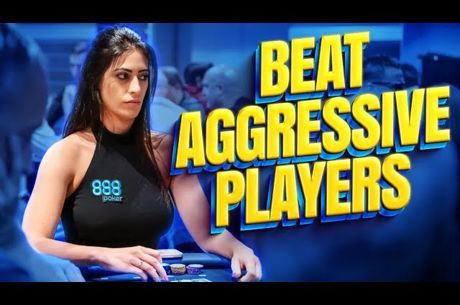Breaking Down Hands from the $3K Shootout with Leo Wolpert
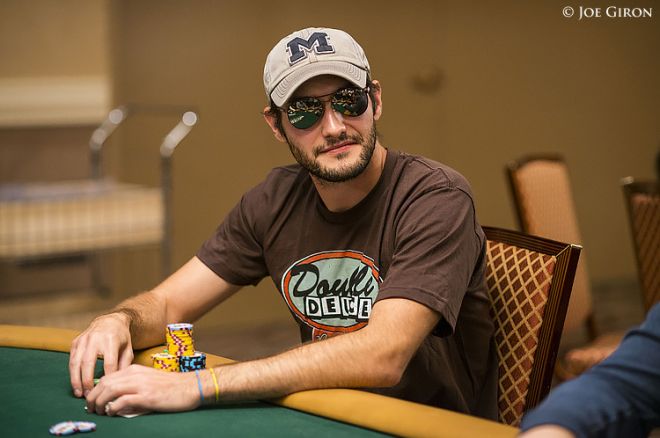
Leo Wolpert of Fairfax, Virginia is back at the World Series of Poker again this summer, one of many familiar faces among the thousands battling for bracelets.
The former law school student, quiz bowl player, and Jeopardy! contestant has amassed nearly $1.5 million in tournament cashes over the last decade and has consistently performed well at the WSOP where he’s earned nearly two dozen cashes including one bracelet in the $10,000 Heads-Up No-Limit Hold’em event in 2009.
Wolpert has already cashed a couple of times this summer at the WSOP, including final tabling Event #4: $3,000 No-Limit Hold’em Shootout where he finished ninth. We had a chance to talk to Wolpert about that event and other strategy-related topics.
PokerNews: Thanks for sitting down with us, Leo. You recently final-tabled the $3K Shootout — not a bad way to kick off the summer. Other than that, how have things been going?
Leo Wolpert: Other than the shootout final table, I’ve had a min-cash in the $1,500 6-max and a bunch of bricks in a row. A big part of it is variance. Many better players than me go on way longer non-cash streaks. However, it’s impossible for me not to be a little self-critical in the face of poor results.
I haven’t played perfectly. The competent players in these fields have certainly forced me into mistakes, or at least forced me to play the guessing game. And nobody can guess right all the time. There have also been decisions where I deviated from my big-picture strategy for reasons of varying quality (with results of varying quality). But with those few exceptions, I’m comfortable with the decisions I’ve been making in these MTTs.
I was on the rail and saw your bustout hand in the Shootout which sort of played itself. Is there anything more to say about it than that?
(Ed. note: As reported on WSOP.com, from the button Wolpert flat-called an opening raise from eventual Event #4 winner Nick Petrangelo, then David Peters three-bet from the small blind. After Petrangelo folded, Wolpert shoved his stack of just under 38 big blinds and Peters called, and Wolpert’s pocket tens couldn’t catch up to Peters’s pocket queens.)
I’m not so sure my bustout hand played itself, even if you and several other people whose opinions I also respect say so. From the very get-go, it’s a close decision between just calling Nick’s cutoff open and three-betting. I decided to flat because the only short stack (~16 BBs) was in the big blind and seemed ready to rip. I think I would’ve flatted my entire continuing range here for this reason.
Obviously being results-oriented, it would’ve been nice to make some sort of Davidi Kitai-style psychic hero fold. It does seem a bit ridiculous to hold myself to the standards of a live pro, soul-reading clairvoyant. David Peters (despite being on the solid side in my very limited experience) isn’t giving off live tells, and someone who regularly plays high-rollers and super high-rollers should probably have a SB three-bet range much wider than JxJx+ and AxKx versus a cutoff open and a button flat.
Even though in retrospect I suspect he might overflat 8x8x or 9x9x, in the moment I thought he might three-bet-to-call those hands (because maybe he thinks I’m pulling the trigger with 7x7x or less, considering he would expect me to three-bet 10x10x+ versus the opener). I have 45% equity versus 8x8x+ and AxKx, so that combined with the possibility he’s squeezing and will fold (maybe even folding hands that I flip against like AxJx-offsuit) makes me think jamming 10x10x is +chip EV.
However, if I’m flatting my entire range, then maybe I can flat the three-bet with hands like 10x10x (instead of risking my MTT life). Of course with only one shortish stack, tough opponents, and low pay jumps for a while, I’m paying a moderate, but not extreme, ICM penalty by busting. This is because I can overflat AxAx as well to protect those hands I don’t necessarily want to get all-in pre.
In the moment I didn’t really think about that — in part because trying to split my range between flatting and four-bet jamming is kinda tough, in part because I don’t like excluding AxAx from my get-it-in-pre range, and in part because when I flat 10x10x my hand looks a lot like what it is and despite having position I will make heaps of mistakes on various flops.
Overall, it was a gross spot. I would’ve liked to bink, but I won a bunch of flips and was on the right side of a bunch of coolers to get that far so I can’t really complain.
Were there any memorable hands from earlier in the tournament that led you to the final table?
Yes, there was one early in the first table. The blinds were 100/200 (no ante). A very tough MTT pro opens to 450 from under the gun, I flat in middle position with AxQx-offsuit, and the BB (unknown to me but appeared to be a Canadian online MTT reg) flats.
Flop Ax8x4x rainbow. BB checks, UTG bets 550 into 1,450, I call, and the BB overcalls. The turn is a Badugi 10x [i.e., a fourth different suit]. BB checks, UTG bets 1,800 into 3,100, I call, and the BB snap-folds. To be honest, I actually considered folding the turn. UTG’s aggro-reputation cuts both ways here. On one hand he’s aggro, so he could be barreling a wide enough range that I’m obligated to call with such a strong hand getting almost 3-to-1. On the other hand he’s aggro, so I’ll face a bunch of river bets that I might not feel great about calling.
Anyway, the river is a Jx so the final board is Ax8x4x10xJx, and the UTG now bets 4,800 into 6,700. This is a conspicuously large bet by MTT standards and it sent me into the tank.
I didn’t think there was enough behind to turn my hand into a bluff, and even though I block four combos of KxQx/Qx9x, it’s practically impossible for me to get to the river this way with KxQx, Qx9x, or 9x7x. UTG is good enough at poker to realize this, so he will call with everything in his value range except maybe AxKx and some of the worst two-pair hands.
The most plausible bluff candidates he can have are the 12 combos of 7x6x-suited, 7x5x-suited, and 6x5x-suited, some of which he may choose to fold preflop. If he’s always pulling the trigger with those and always has those hands (and/or other bluffs, like perhaps turning pairs into bluffs) it’s a must-call.
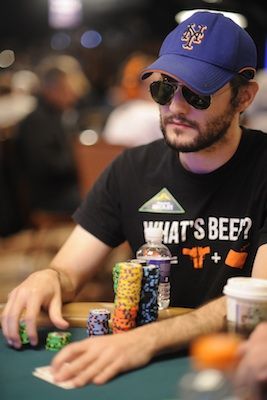
Assuming he’s folding 9x7x-offsuit and Qx9x-offsuit from UTG, there just aren’t enough two-pair-or-better hands left to make calling wrong getting 2.4-to-1. However, on such a dry board I think he would expect me to flat all my sets and two-pair hands on the flop and perhaps even the turn. He’d be right to expect this, in fact I felt like I was toward the bottom of my range for getting to this spot. Also I didn’t think he’d pull the trigger on naked gutshots into two people on the turn.
I tanked my way into a fold and I guess I’ll never know if it was right; it felt right at the time.
You are kind of a Shootout guru with four cashes in those events at the WSOP including a third-place finish in the $5K Shootout in 2008. What can you tell our readers about how to approach these tournaments?
Ha ha! I’d like to attribute much of my shootout guru-hood to variance. It’s not uncommon to run way better than I play over a sample size of a dozen tournaments. However, I do think I have an edge over many otherwise good MTT players short-handed.
When good MTT players get short-handed in a MTT, they have to worry about payout jumps and shortish stacks. Short-handed play in these shootouts often begins with deeper stacks, and since the first two tables are essentially winner-take-all, it plays a bit more like a cash game. And I have heaps upon heaps of experience at heads-up and short-handed cash game NLHE from grinding those games online for ages.
I guess “play millions of hands of two-to-six handed online NLHE cash games” isn’t really an approach to shootouts or actual advice. I suppose in these tournaments I care way less about stuff like protecting my tournament life (you have to get every chip at a winner-take-all table) and perhaps this results in me pulling the trigger on thin plays a bit more.
Does this approach also make sense for single-table satellites? Do you ever play those? They seem to be somewhat similar.
Despite getting my start in online poker grinding $20-to-$50 SNGs on partypoker back in 2004, I haven’t played many single table satellites at the Rio.
I suspect the strategy for those should vary significantly from proper live shootout strategy. The biggest reason is because Rio STTs are winner-take-all in name only; these things are chopped (as are the private last-longers, which effectively reduce the rake) on the regular. Sometimes people will even make it easy on you and announce their intention to chop with a few people left, effectively cluing you to the “true” payout structure of the tournament.
Additionally, a shootout will offer deeper-stacked shorthanded play than a STT, often against tougher competition.
Since there are no more shootouts on the schedule, what other events are you looking forward to this summer?
The $1.5K mixed-max, the 6-max. NLHE events, and of course the Main Event. Hoping to bink something big before then so I don’t have to start breaking out the #SummerSaver hashtag.
Thanks to Leo Wolpert for taking the time to break down some hands and talk Shootout strategy with us. The $1,500 mix-max or “split format” NLHE event to which Wolpert refers — Event #34 — begins next Tuesday, June 16.
Want to stay atop all the latest in the poker world? If so, make sure to get PokerNews updates on your social media outlets. Follow us on Twitter and find us on both Facebook and Google+!

